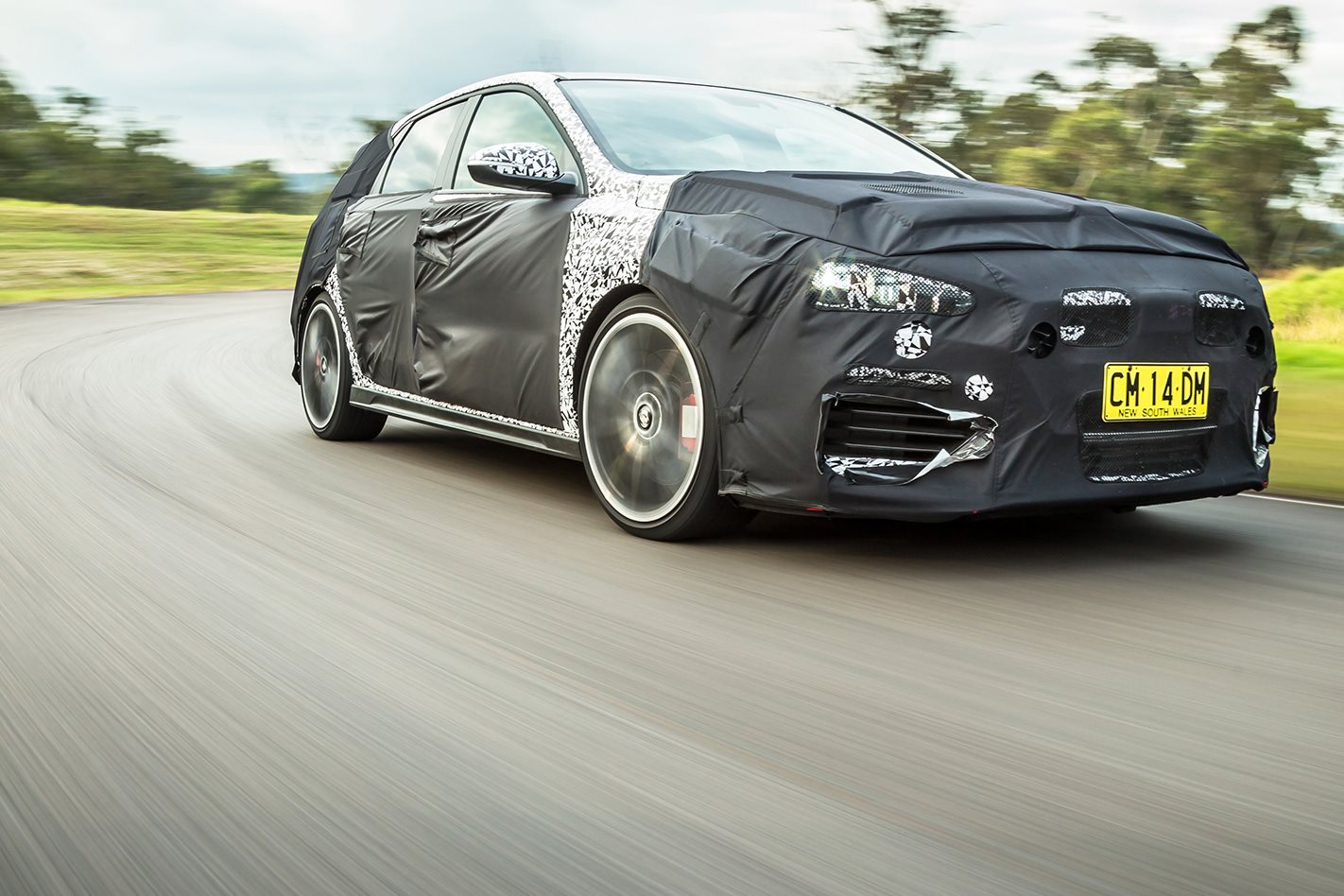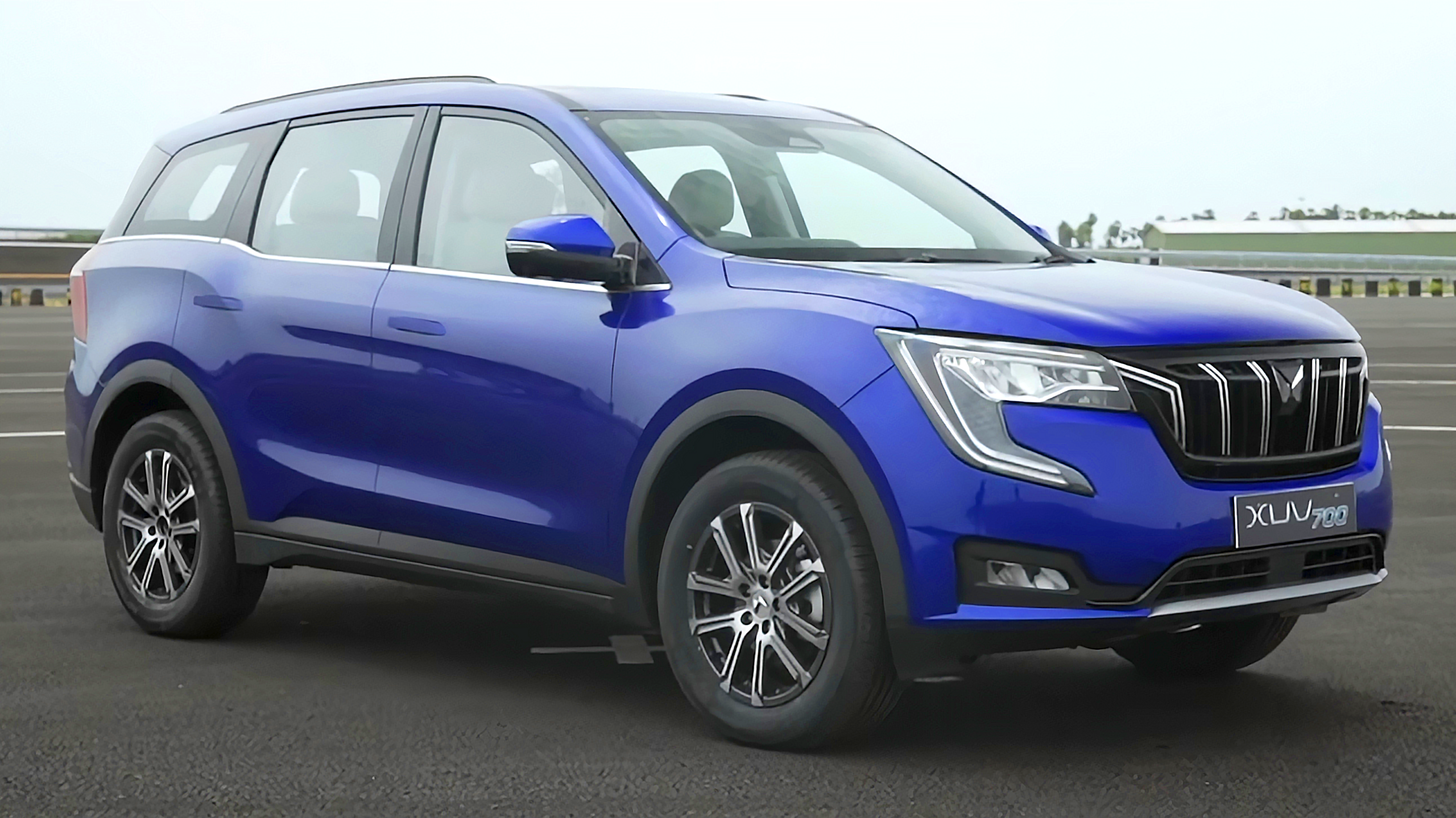POISED to belatedly join the hot-hatch set with the forthcoming Hyundai i30 N, if these prototypes are anything to go by, it’ll be good!
WHAT IS IT A heavily re-engineered version of the new PD-generation Hyundai i30, featuring an all-new front suspension and steering set-up, a broader front track, a larger 2.0-litre turbo-petrol four, and significantly enhanced seating and driver appeal.
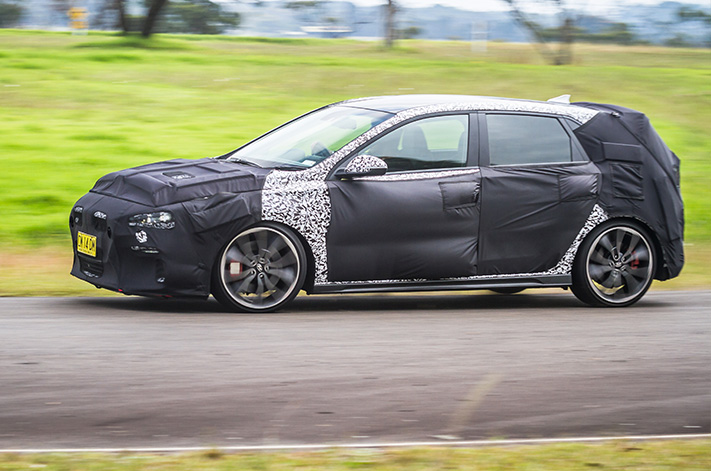
MAIN RIVALS Besides the bleeding obvious (Volkswagen Golf GTI), just about every hot hatch you care to name, especially the manual-only offerings from Ford (Focus ST), Renault (Megane RS) and Peugeot (308 GTi).
THE WHEELS VERDICT A positive first taste of the forthcoming i30 N, demonstrating that it has the sporting DNA to create a polished, poised and powerful hot-hatch alternative to the Golf GTI. All it really needs is a bit more mongrel in the induction growl plumbed in via its sound symposer, and a more pivot from its chassis if it really wants to deliver Focus ST and Renaultsport Megane levels of handling adjustability and involvement.

THE WHEELS REVIEW If you started at ‘A’ and consecutively worked your way down the alphabet listing the manufacturers who’ve graced the global hot-hatch stage, Hyundai would appropriately fall somewhere around ‘N’, decades behind even Proton. The odd dabble in turbocharging and a likeable (but long-dead) coupe have barely registered in bolstering the 50-year-old South Korean firm’s brand image, so Hyundai has belatedly decided that a proper performance line is in order, starting with the camouflaged hot hatch you see here, the i30 N.
Hyundai’s performance ambition is no secret, seeing its WRC cars have been wearing light-blue ‘N’ logos for several years now, but this is our first taste of what ‘N’ will mean to its road-going fleet. This is just a spoonful, though, because we’re driving a pair of not-quite-ready i30 N prototypes on a private test track. Many engineering details are yet to be signed off, including suspension tune, engine outputs, and drive-mode calibration, yet even in an unfinished state, Hyundai’s hot-hatch shows real promise. The production versions won’t launch until late this year, closely followed by the i30’s new-generation coupe twin, the Veloster N.
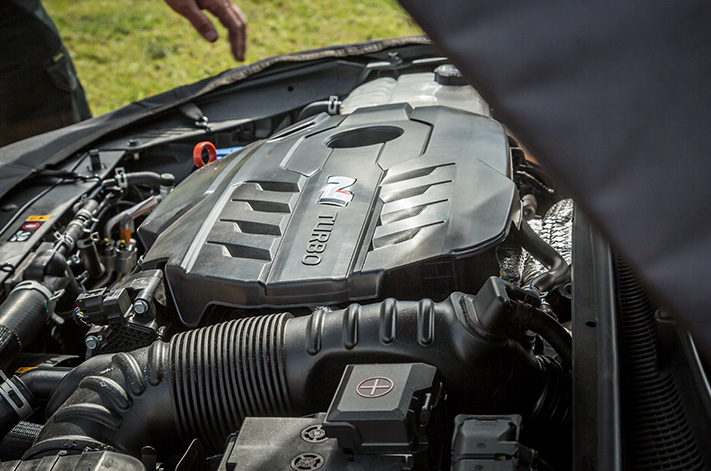
In a similar vein to the multiple grades of Renaultsport Megane, and Golf GTI and R models, Hyundai plans to lure buyers in with a sharply priced i30 N starter. While its headline power output may not be quite as heroic as the Performance Pack model’s (achieved via a slightly different overboost strategy), the base i30 N shares almost everything with its bigger brother. And that means not a whole lot with a bread-and-butter i30.
Beneath the inevitable car bras and camo colouring, the N versions disguise a completely new front suspension set-up, with flared front guards to house a broader track. Up front, nothing is shared with the regular i30, or even the warm SR. A new front crossmember, front knuckles, lower control arms, and a new dual-pinion steering rack with rack-mounted electric assistance (instead of column-mounted) combine with completely different kinematics (lower roll centre, different king-pin offset) to achieve faster steering response and a higher level of traction, while still providing good feedback.
Yet there are some differences between N models. The base car relies on torque vectoring and wheel braking to enhance its traction, whereas the Performance Pack version scores an electronically controlled LSD, as well as larger front brake rotors and 19-inch alloys wearing HN-stamped Pirelli P Zero 235/35R19 tyres (instead of Michelin Pilot Super Sport 225/40R18s).
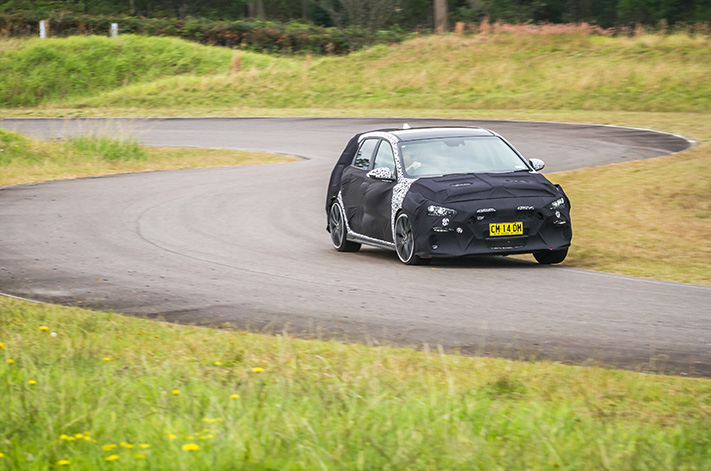
One final feather in the i30 N’s dynamic cap is its damping system – fully adaptive with five modes: Eco, Normal, Sport, N, and Custom. They are adjusted via two light-blue-coloured flaps mounted beneath each horizontal spoke on the N’s nifty steering wheel. The left scrolls between Eco, Normal and Sport – the damping and steering calibrations of which are yet to be determined by Hyundai’s Aussie engineers for our market – whereas the right activates ‘N’ mode (which ramps everything to its max setting, mainly for racetracks) or Custom, which allows individual configuration of suspension, steering, throttle response, ESC control, LSD control, exhaust sound and rev-matching. A unique feature in the hot-hatch class, this synchronised rev-matching function ramps up its flamboyance as you scale through the drive modes, or you can turn it off via a button on the wheel.

Unexpectedly, there’s a smooth and sweet cohesion to the 202kW N’s demeanour that is almost at odds with its power figure. Its engine – a development of the all-aluminium 2.0-litre ‘Theta II’ turbo donk from the Sonata – cops a new turbo, a barky new exhaust system, new sensors, and a revised induction system to give it much more high-performance character.
2018 Hyundai i30 N makes track debut in near-production form
“We worked a lot on the intake system to have a more free airflow in and out; that’s the magic of a good turbo engine”, says Biermann. “We tried to keep it up revving way above 6000rpm … some of the turbo engines die too early and run out of talent, and we tried to avoid that as much as we could because for good driving, you need linearity also from the engine.”
The reality proves it’s a vastly different beast to the Sonata’s smooth but rather characterless unit. In the top i30 N, an active exhaust flap (unique to this model) combines with a sound generator that plumbs induction noise to the firewall to give the i30 a fruity and crackly, yet sweetly refined personality. You can hear the turbo spooling up quickly from 1700rpm, yet this engine will happily stretch to the 6800rpm cut-out if you so desire. That said, 3000-6000rpm is its pleasure zone, supported by a subtle growl from the engine bay under load – perhaps a bit too subtle for a hot hatch with this level of performance – and a deliciously barky dual exhaust on overrun or between gearchanges.

The 184kW car comes off surprisingly well in the face of its beefier, more feature-laden sibling. Not quite the same level of exhaust bark takes little away from its drivetrain sportiness, while the lack of a dedicated LSD only makes itself felt in really hard driving. At six or seven tenths, even in the rain, the 184kW i30 N has no difficulty feeling quick and effortless. In order to enhance the i30 N’s entry point, I think the starter model makes complete sense – if you don’t mind shifting gears yourself.
What such a closed environment doesn’t tell you is what the i30 N’s road refinement is like, or any dynamic aspect of its Normal and Sport modes considering both are yet to be tuned for Australia. But the bones are definitely there. The i30 N package feels holistic in its cohesiveness, and that’s with more tuning still to come.

A track-honed car that’s also comfortable and involving on the road is what hot-hatch dreams are made of. Hyundai has never produced a true performance car, let alone a sporting model able to challenge class benchmarks, but a lot of energy has been invested in the i30 N program. And given our brief taste of this surprisingly sophisticated hot hatch, there’s every chance the finished product may finally show the Golf GTI what a true all-rounder can be. If you want a manual, that is.

